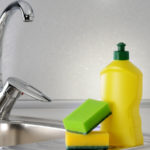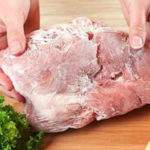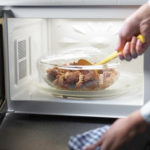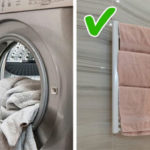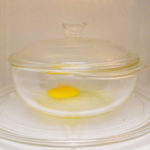PP plastic is the safest type of plastic, suitable for use in microwaves, withstands heat up to around 150-160oC. If heated with hot water or reheating cold rice, it’s fine, but if reheating oily food for a long time, around 10-15 minutes, at temperatures above 160oC, the plastic will degrade over time.
An easy-to-spot sign is when white spots appear on the container and cannot be washed off. According to many scientific studies, oil is a medium that helps plastic particles degrade easily at high temperatures.
“Homemakers who have the habit of continuously using PP plastic containers in microwaves or containers with fatty foods for reheating will gradually degrade the plastic, which will then mix into the food, affecting health,” said Dr. Vu Thi Tan – lecturer of inorganic chemistry at Hanoi University of Technology.

The white spots on the container indicate that the plastic particles have degraded.
Vu Thi Tan
Dr. Tan’s advice is to use PP plastic containers to reheat food in the microwave when necessary, but with a short period of time. Especially, avoid reheating oily foods.
Dr. Tan didn’t specify how long because it also depends on the microwave’s wattage and the food’s environment. The higher the wattage, the faster it heats up. Therefore, instead of using PP plastic products, homemakers can choose to use porcelain utensils to reheat food in the microwave. “Porcelain is still the safest,” Dr. Tan shared.
Is It Possible to Boil Eggs in a Microwave?
Curious to find out if you can make hard-boiled eggs in the microwave? This article will provide insight into the viability of using this method to create tasty eggs without using a stovetop. Read on to find out more!

























